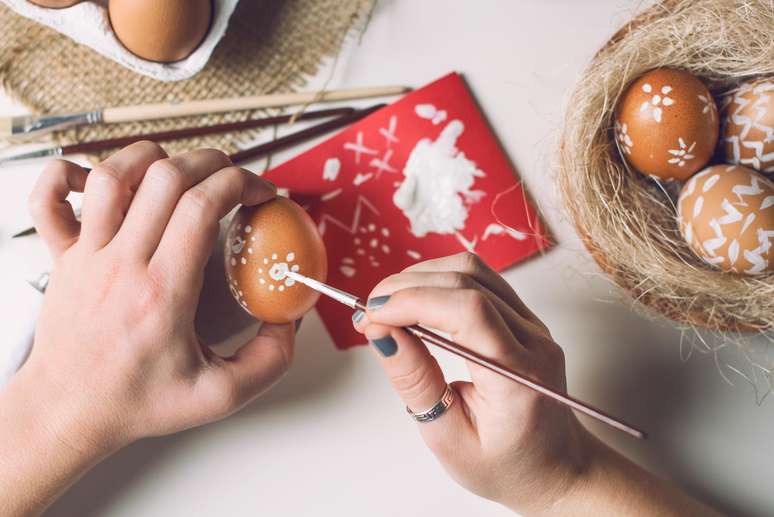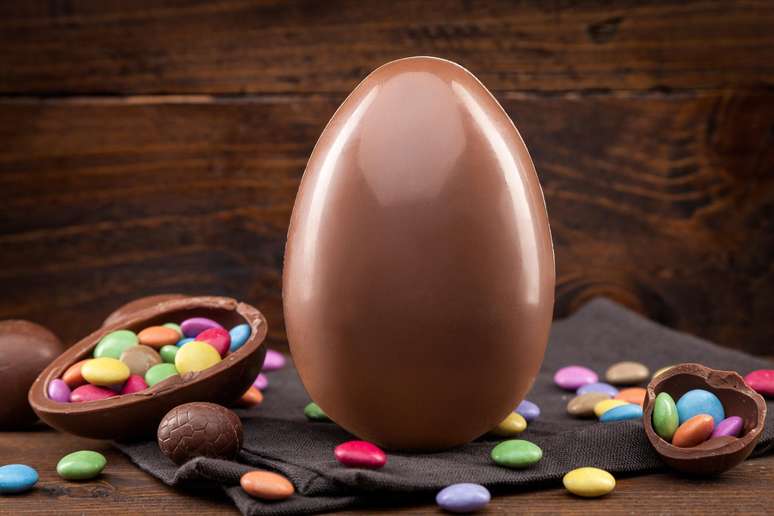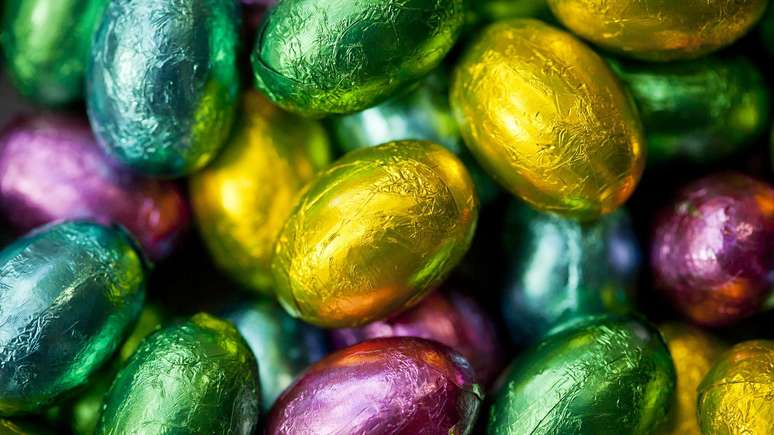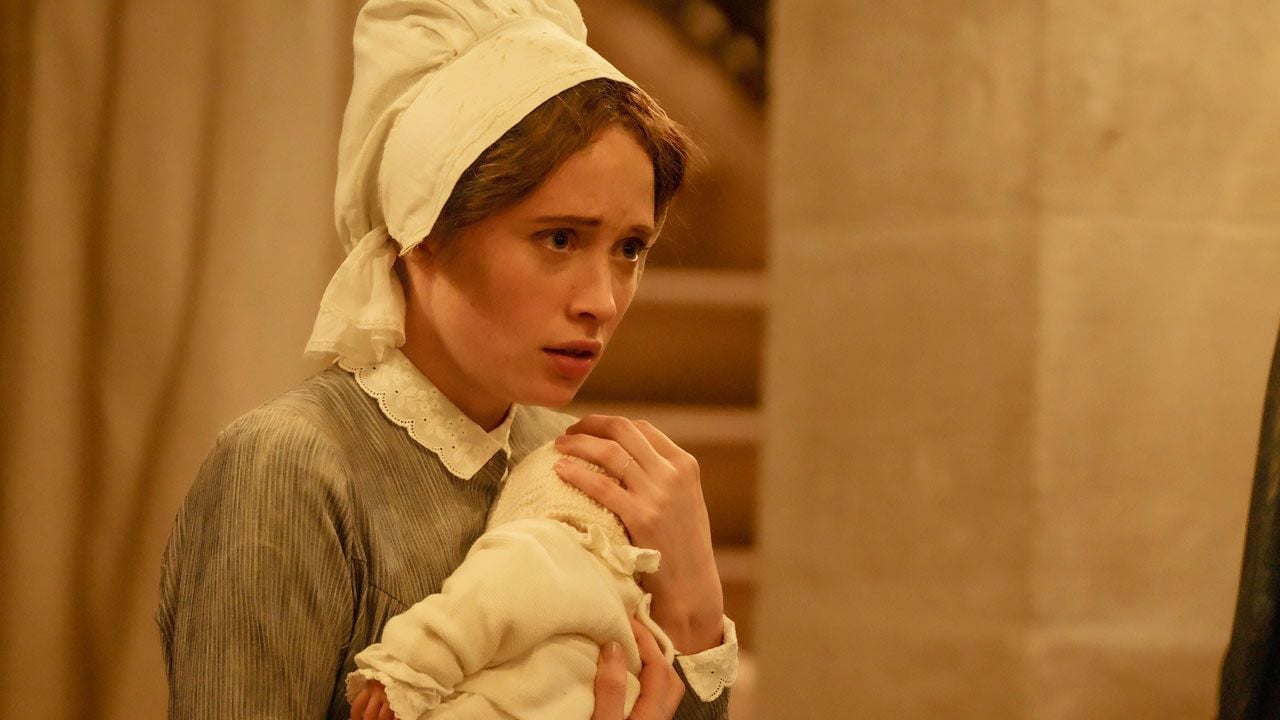Many Easter traditions come from medieval-era Christianity or even older pagan beliefs. But the chocolate egg is more recent.
Many Easter traditions, such as sweetbreads and Sunday lunch, come from medieval-era Christianity or even older pagan beliefs. But the chocolate egg is a more recent twist.
Chicken eggs have been eaten at Easter for centuries. Eggs have long symbolized rebirth and renewal, making them perfect for commemorating the story of Jesus’ resurrection, which coincides with the arrival of spring in the northern hemisphere.
Currently the Catholic Church allows the consumption of eggs during the fasting period of Lent, but in the Middle Ages they were forbidden, together with meat and dairy products. Medieval chefs often found surprising ways around prohibition and even produced fake eggs to replace real ones.
At Easter, a moment of celebration, eggs and meat such as lamb (another symbol of renewal) are back on the table.
Even after eggs were permitted in fasting meals, they continued to figure prominently in the Passover feast. The 17th-century cookbook writer John Murrell recommended “eggs with salsa verde,” a kind of pesto made with sorrel leaves.
Throughout Europe, eggs were also offered as tithes to local churches on Good Friday.
That may have been where the idea of gifting eggs came from.
The practice was abandoned in many Protestant areas after the Reformation, but some English villages retained the tradition well into the 19th century.
It is not known exactly when people began decorating eggs, but research points to the 13th century, when the English king Edward I (1239-1307) gave his courtiers eggs wrapped in gold leaf as gifts.

We also know that, a few centuries later, people all over Europe colored their eggs. Usually yellow was chosen, using onion skins, or red, with rubiaceae roots or beetroot plants.
It is believed that the red eggs symbolized the blood of Christ. A 17th-century author indicated that this practice came from the early Christians of Mesopotamia, but it is difficult to know for sure.
In England, the most popular way of decorating eggs used flower petals, which generated colorful impressions. The Wordsworth Museum in the Lake District still houses a collection of eggs made for the children of the poet William Wordsworth (1770-1850) in the 1870s.
From dry eggs to chocolate eggs
Painting eggs with colorful patterns is still a common Easter activity, but these days these eggs are increasingly associated with chocolate. When did this change happen?
When chocolate first arrived in Britain in the 17th century, it was a glamorous and very expensive novelty.
In 1669, the Earl of Sandwich paid £227 for a chocolate recipe from King Charles II (1630-1685). The value is equivalent to 32,000 pounds (about R$ 204,000), in current values.
Nowadays chocolate is considered a solid food, but at the time it was a drink usually spiced with pepper, following Mayan and Aztec traditions.
And to the British, this new and exotic drink was unlike anything they had ever tasted. One author called it “American nectar”: a drink for the gods.
Chocolate soon became a fashionable drink among aristocrats, often given away as a status symbol. And that tradition remains to this day.
The drink was also popular in newly opened London coffee houses. Coffee and tea had also just been introduced to England, and the three beverages quickly changed the way Britons interacted with each other socially.
It was then that Catholic theologians actually linked chocolate to Easter, but fearing that eating chocolate would contravene fasting practices during Lent.
After heated debates, it was decided that chocolate made with water might be acceptable during the fast. At least at Easter, a time of feasting and celebration, chocolate was accepted.
Chocolate remained expensive until the 19th century, when in 1847 the Fry’s company (which today belongs to the English Cadbury chocolate factory) produced the first solid chocolate bars, which revolutionized the trade of the product.

This made chocolate much more accessible in the Victorian era, but it was still viewed with some complacency. And, thirty years later, in 1873, Fry’s developed the first chocolate Easter egg as a luxury delicacy, merging two gift-exchanging traditions.
Even in the early 20th century, these chocolate eggs were still seen as a special gift and many people never ate the ones they received. A woman in Wales kept a 1951 egg for 70 years, and a museum in Torquay in southern England recently bought an egg that had been in storage since 1924.
It wasn’t until the 1960s and 1970s that supermarkets began offering chocolate eggs at lower prices, hoping to cash in on the Easter tradition.
With growing concerns about continued chocolate production and avian flu reducing egg production, Easter may look a little different in the future. But if there’s one thing Easter eggs can show us, it’s the adaptability of traditions.
*Serin Quinn is a PhD candidate in the History Department of the University of Warwick, UK.
This article was originally published on the academic news site The conversation and republished under a Creative Commons license. Read the original English version here.
Source: Terra
Rose James is a Gossipify movie and series reviewer known for her in-depth analysis and unique perspective on the latest releases. With a background in film studies, she provides engaging and informative reviews, and keeps readers up to date with industry trends and emerging talents.







